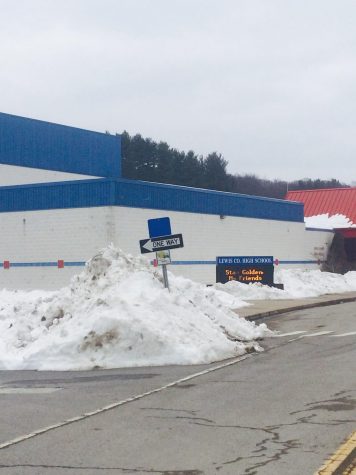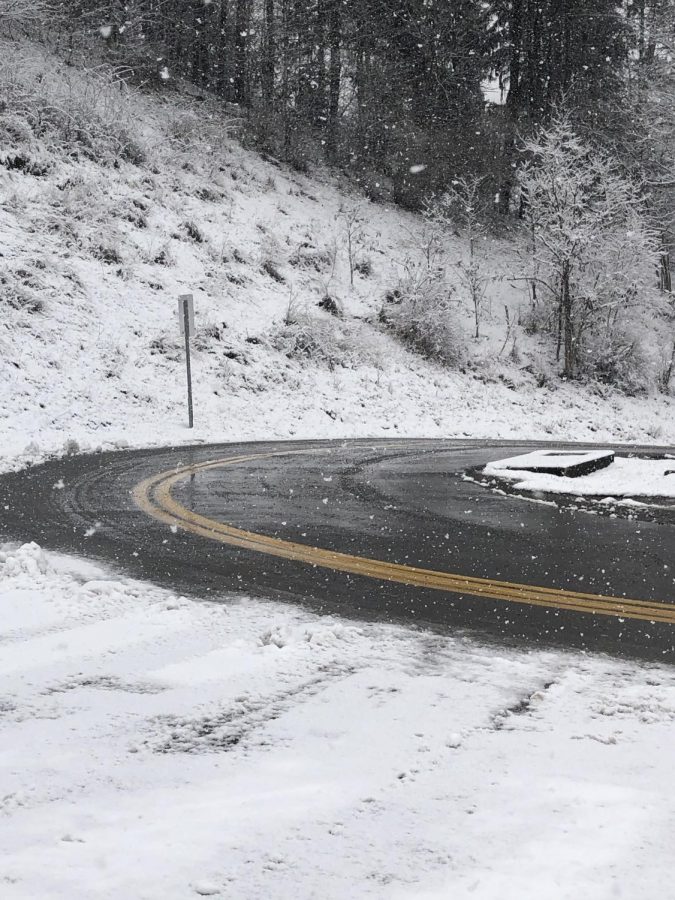Winter Hazards Cause Concerns for Student Drivers
December 17, 2019
As LCHS students approach the “dog days” of winter, some students find it more difficult to navigate Lewis County’s rural roads than others.
Lewis County is a rural county with many back roads and for some, even gravel roads. And, LCHS Superintendent, Dr. Robin Lewis, is the person responsible for making the call to have school or not.
“It’s the second most difficult job I do during the school year,” Dr. Lewis told journalism student Jan. 6 in an staff interview.
She said she wants students in school, but she always wants them to be safe.
She said it is a job and a decision that she doesn’t take lightly.
During winter, Dr. Lewis said she goes to bed around 7 p.m. to wake up at 2:30 a.m. She said she travels throughout the county including the Georgetown Road, Walkersville, Roanoke, Jane Lew and ending at the Board Office in Weston.
She even looks at parking lots.
She said she surveys the roads first-hand, but also consults with the National Weather Service, local Department of Highways workers and other superintendents in order to arrive at a decision by 4:30 a.m. to 5 a.m. She said the latest she calls off school is 5:30 a.m. due to cooks and bus drivers already be on job site.
She said she wants to ensure the safety of all students, and that is her top priority. However, she said it is also important for students to attend school.
“That’s my job,” to see that students get an education.
She said she surveys main roads, side roads and even back roads. She takes into account current road conditions, treatment of roads, forecast, wind, sun and temperature.
And, Lewis County’s rural roads add to the complexity of the “to close or not close” decision.

Lewis County is regularly hit with snow each winter, and student drivers have to learn to navigate rural roads.
Winter travel can be tough for students who travel roads that are not treated as quickly as the main and secondary roads. And, many of LCHS students drive to school on rural roads.
Dr. Lewis said she always gives drivers the option to pull over if driving conditions become hazardous. She said this happened earlier when driving conditions became dangerous. The Department of Highways were dispatched to the area and had the road treated within 15 minutes.
Students said most of the time they are used to driving on back roads and secondary roads which are not treated by the WV Department of Highways as quickly as the main roads are.
“It’s not that bad; often, we slide around on the roads,” Emily Rhodes, freshman, said about driving during the winter in Lewis County.
However, very few students have a longer commute than LCHS’s principal Mr. John Whiston who lives in southern Lewis County’s Orlando community.
Whiston said despite living nearly an hour away on many back roads, that he, like Dr. Lewis, still believes having school is important. He said student safety comes first, but that he believes education is also important.
Mrs. Linda Goldsmith, math teacher, agrees. Goldsmith also has a long commute on back roads.
“As long as the roads are safe, there should still be school,” Goldsmith said.
Living in town could also be hazardous, but those who live in the city could agree that salt is put onto roads while out in the country back roads sometimes don’t get salt at all.
Students said living in a rural area that they are used to driving on curvy, hilly roads, but that snow and ice can add to the difficulty.
“I don’t like it; sometimes my bus slides,” Collen Lunsford said.
“They keep the roads clear. Only rarely did I have problems, but I have been stuck in traffic due to wrecks,” MSgt. Bill Linger said about his route to school from Marion County on I79.
Driving in winter weather can present different problems for high school drivers who are largely inexperienced.
Others quickly countered that students always have the option to ride a school bus which is operated by an experienced and certified CDL driver.
Dr. Lewis praised the competency of the bus drivers and encouraged students to ride the bus on hazardous weather days.
Students cited the icy road conditions that hit central WV Friday, December 13. LCHS had at least four students wreck due to icy road conditions.
Dr. Lewis said that on that particular day, 33/35 buses were already en route when the ice hit around 6:30 a.m.
She said that parents always can use their own discretion and that the safest means of transportation is the bus.
“We have good drivers who are trained,” Dr. Lewis said.
Dr. Lewis said most of the accidents that happen are at the beginning of a snow event when driver speed is too fast.
Every year 24 percent of weather-related vehicle crashes occur on snowy, slushy, or icy pavement and 15 percent happen during snowfall or sleet. More than 70 percent of the nation’s roads are located near a snowy region. Usually when the snow begins to fall, drivers usually speed up to get to their destination or to were they are going this is the natural cause to most winter-related accidents.
Staff Reporter Liz Pratt contributed to this article.

